Jon Spaulding and I recently had the opportunity to play Bel-Air. I hadn’t played the course in over 10 years and it was the first time for Jon.
- Founded in 1926 by Alphonso Bell, a produce farmer who upon drilling for water in the Santa Fe Springs area found oil instead. His riches allowed him to purchase the land which is now the unincorporated area of Bel-Air.
- Along with Lakeside, this is the SoCal club of the stars including; Clark Gable, Bing, Nicholson, Eastwood, Chris O’Donnell, Tom Cruise and Jon’s favorite, Jack Wagner. Not to turn this into a TMZ thread but earlier this year Cruise added Katie Holmes to his membership in an effort to bond with Katie’s father, a devout Catholic and not a fan of Tom’s Scientology leanings.
- It has hosted the 1976 US Am (Bill Sander) and 2004 US Senior Am (Mark Bemowski).
- While working as a caddy at Bel-Air, Greg Puga won the 2000 US Mid-Am at The Homestead.
To design the course, Bell brought in George Thomas, construction foreman Billy Bell (no relation) and former California Am champ & Pebble Beach designer Jack Neville. The first nine at Bel-Air was built in 1925 with the current par 3 fifth temporarily serving as the opening hole. The land originally planned for the second nine was instead purchased by the state and used for the UCLA campus. While searching for additional land to route the remaining holes, Neville, Thomas and Billy Bell came to a spot near the current clubhouse and decided that if a golfer could carry the adjacent canyon it would open up the other side of the canyon for more holes. Neville made the 150 yard carry using a putter, and the swinging bridge hole and back nine were born.
The strength of the course is the circuitous routing that winds through the canyons, exposing several different wind conditions while taking advantage of natural ground contours, elevation changes and spectacular views. Fairways are bermuda, greens poa annua. Missing unfortunately are Thomas and Bell’s artistic, natural bunkers, the victims of several modern architects who have been permitted to mark their territory at Bel-Air. As you’ll see below, the ongoing work of consulting architect and Bel-Air member Tom Fazio is evident throughout.
Hole 1Par 5 453-505 yds
Once a typically gentle Thomas opener, the growth of trees on the left has made hitting the fairway a must. The diagonal creek crosses the fairway 80-100 yards from the green and was recently widened.
Approach to the reverse cant green fronted by a newly renovated bunker.
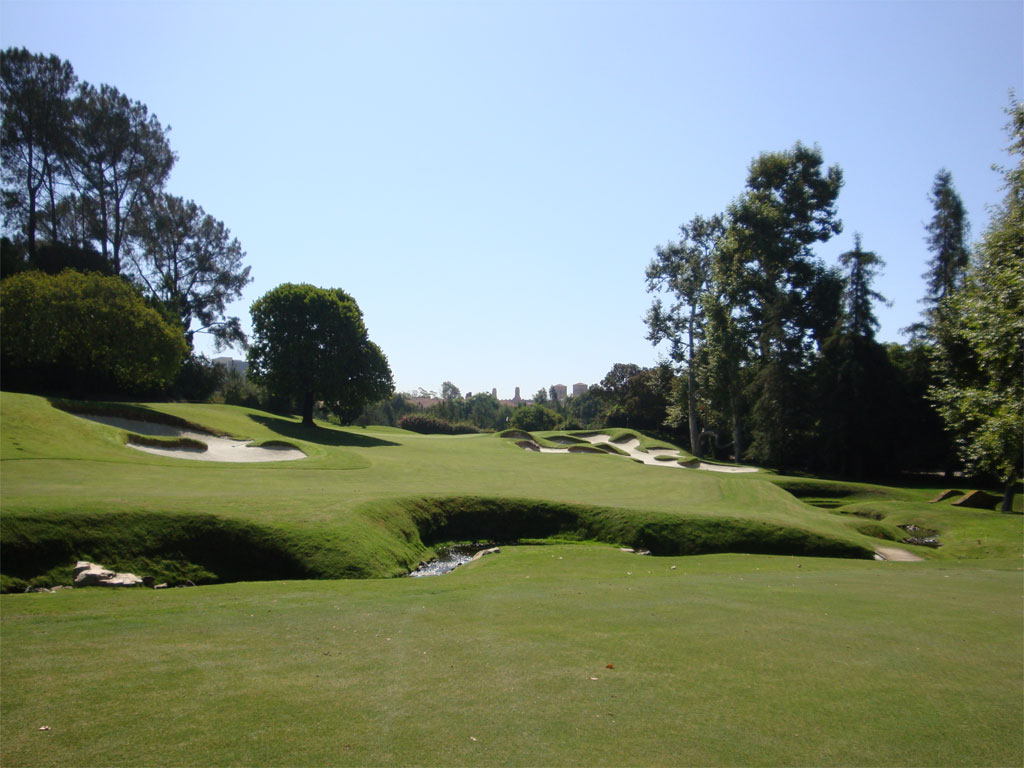 Hole 2
Hole 2Par 4 382-441
Originally a sporty risk/reward play with a bunker in the left center of the fairway. Now just a wide open “bomb it” shot.
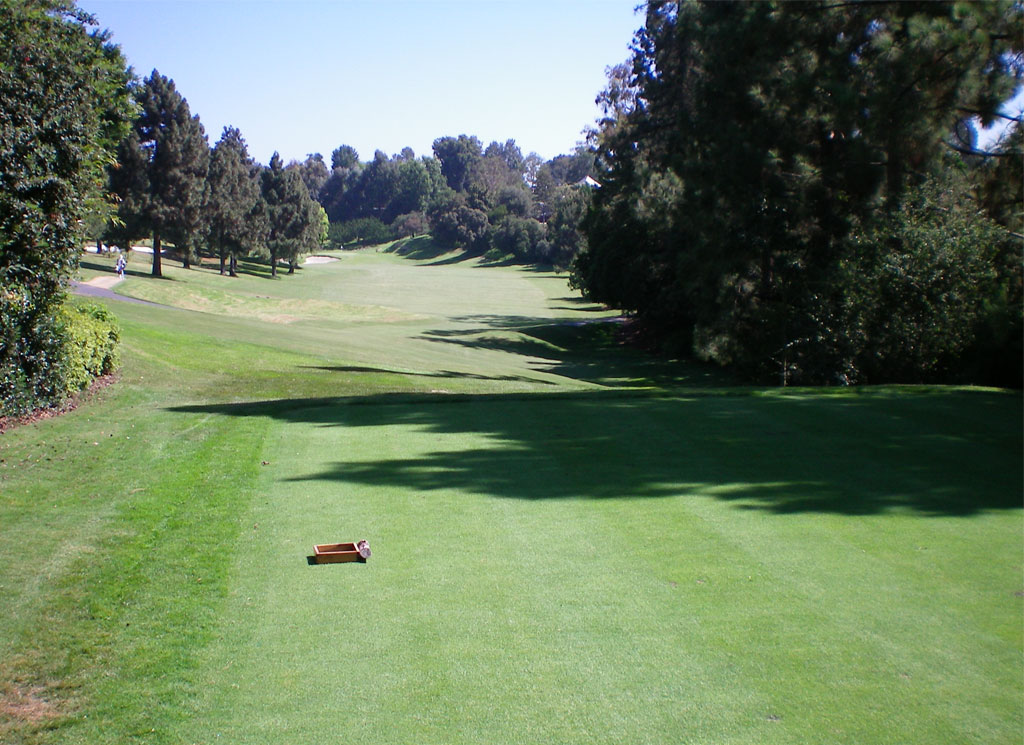
Remnants of the carry bunkers along the left side of the 2nd fairway.
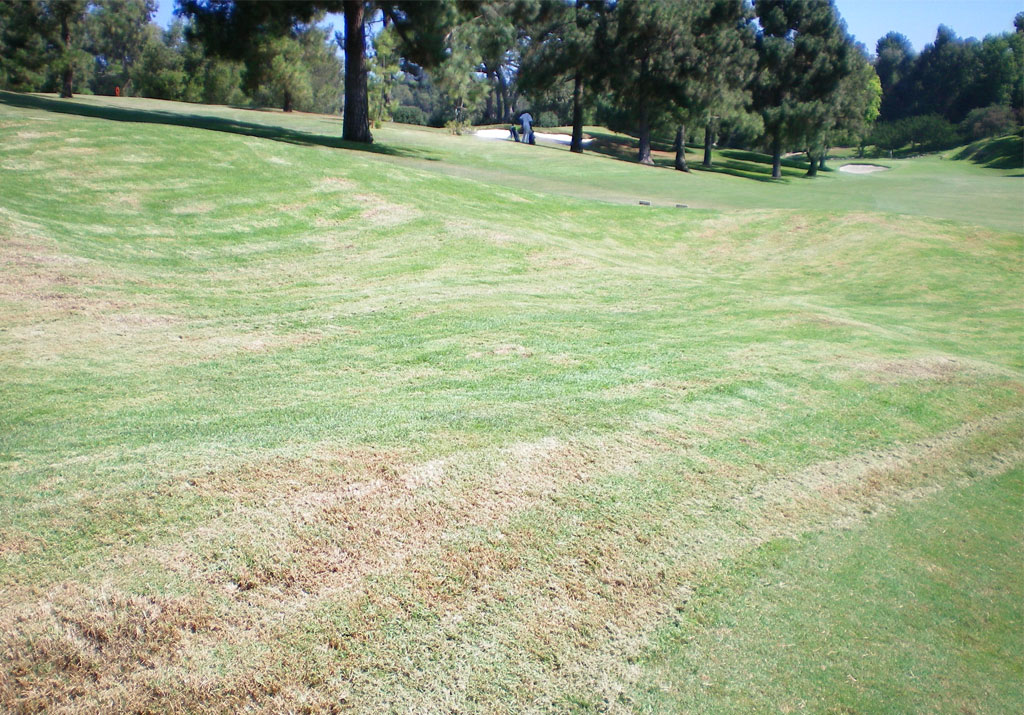
Sketch of #2 from The Captain by Geoff Shackelford showing aggressive play “B” aimed directly down today’s tree-line.
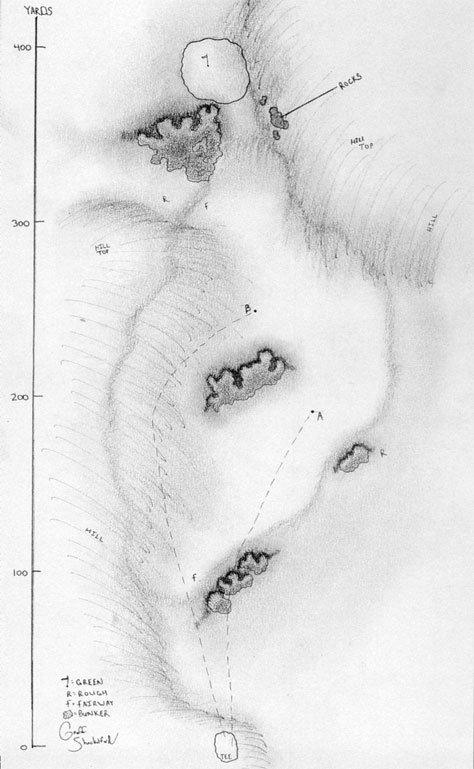 Hole 3
Hole 3Par 3 156-170
The lake was originally two bunkers.
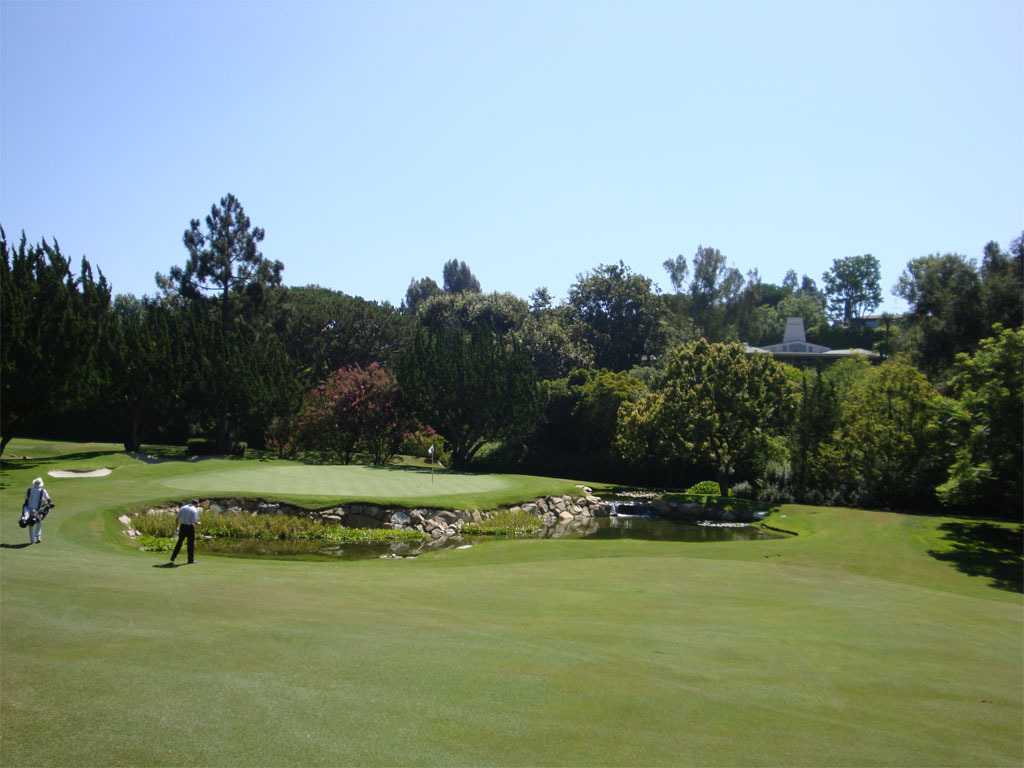 Hole 4
Hole 4Par 4 424-434
No 1 handicap on the front plays slightly uphill with the ideal drive flirting with a large sycamore on the right. Based on a 1929 aerial I think there were two large bunkers in front of the green which has some of the most severe contours on the front nine.
Tee Shot:
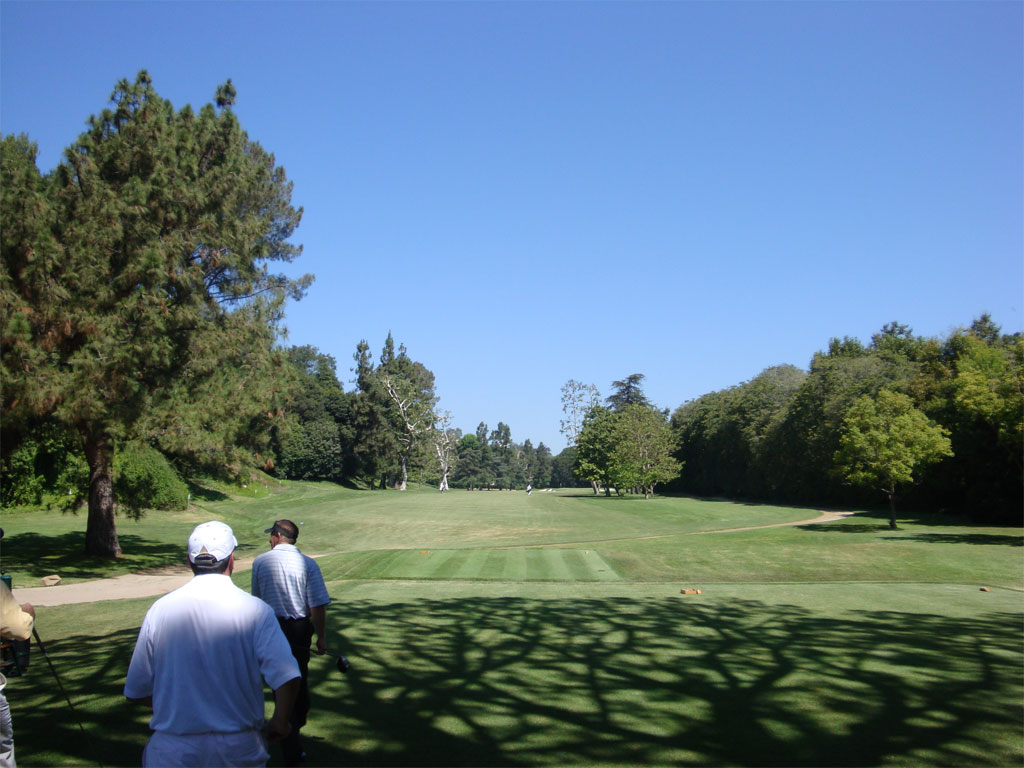
Approach:
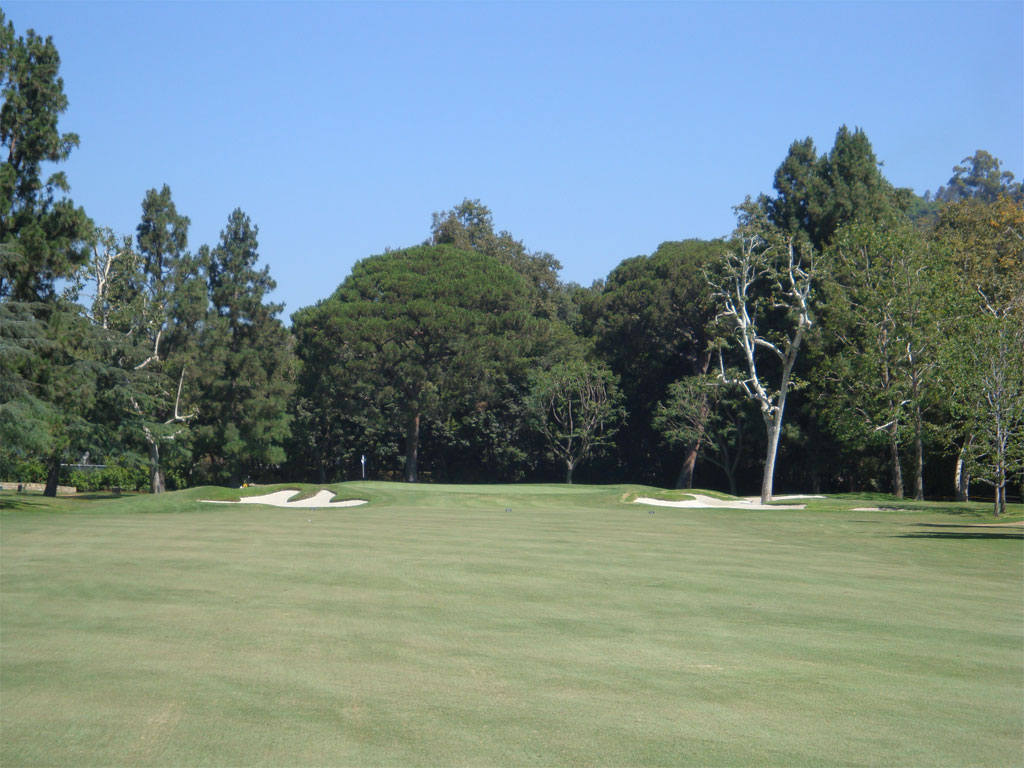
Green:
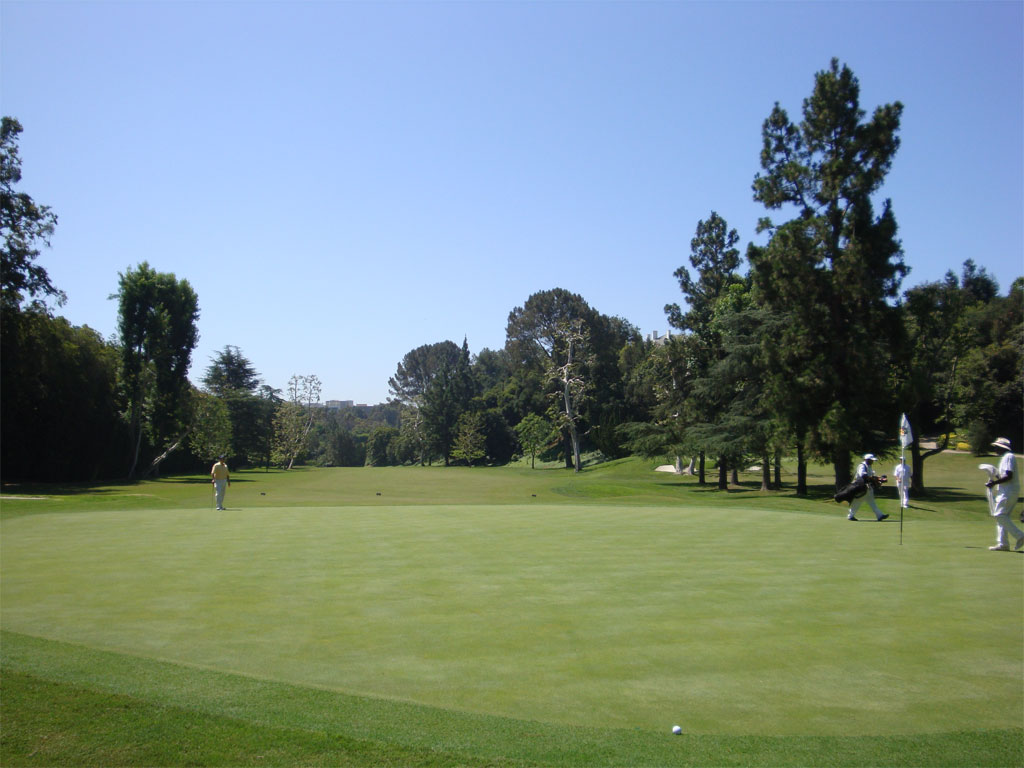 Hole 5
Hole 5Par 3 154-165
Originally the opening hole when the course was 9 holes. Green was a plateau and closer to the hillside and was lowered by Dick Wilson in the late 60s. Tee shot challenge is probably similar to how it was in 1926.

Circa 1926. It sure would look nice if that bunkering was restored.
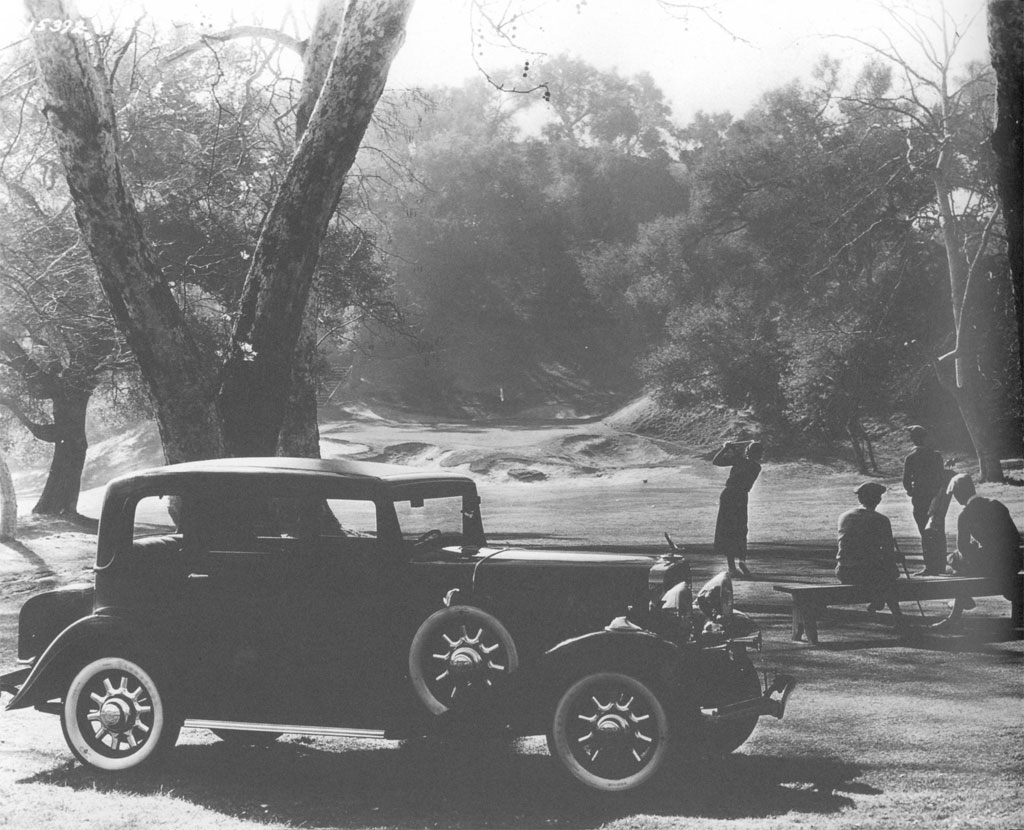
The 5th hole dead ends in a canyon. Golfers had to scale the large ridge to get to the next tee before a connecting tunnel was built. It was added before carts but as luck would have it carts fit through with about half an inch to spare.
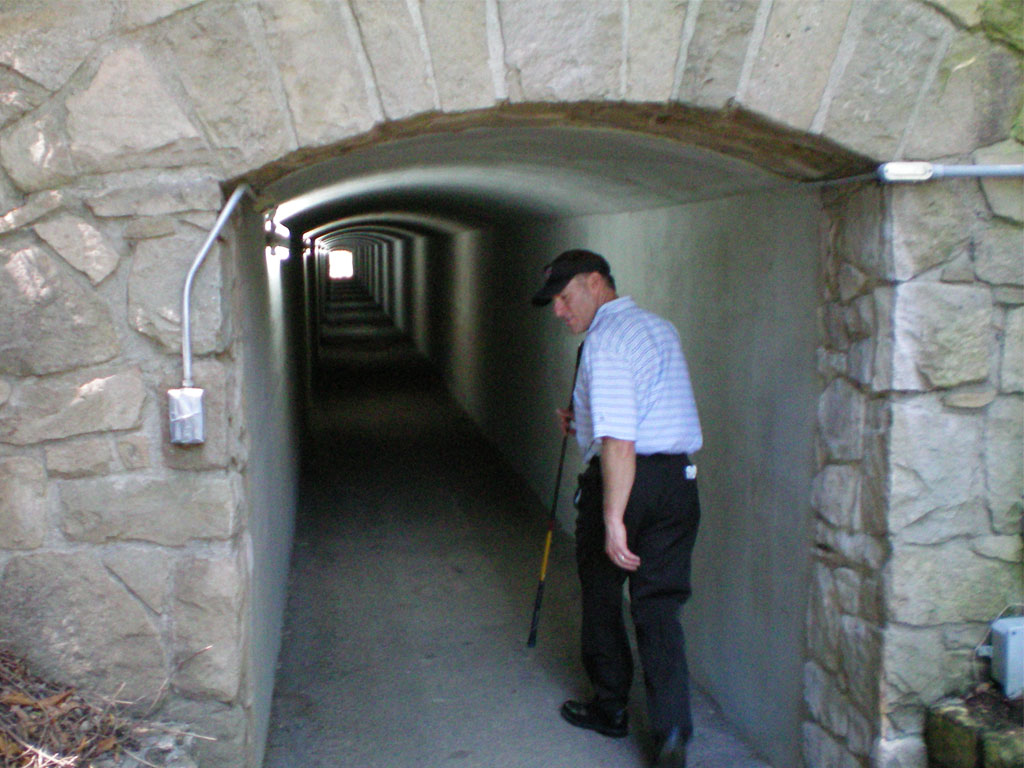 Hole 6
Hole 6Par 4 353-371
Severe left sloping fairway with an option to drive the bunker and ridge on the right.
Tee shot from the RTJ rebuilt tee box:
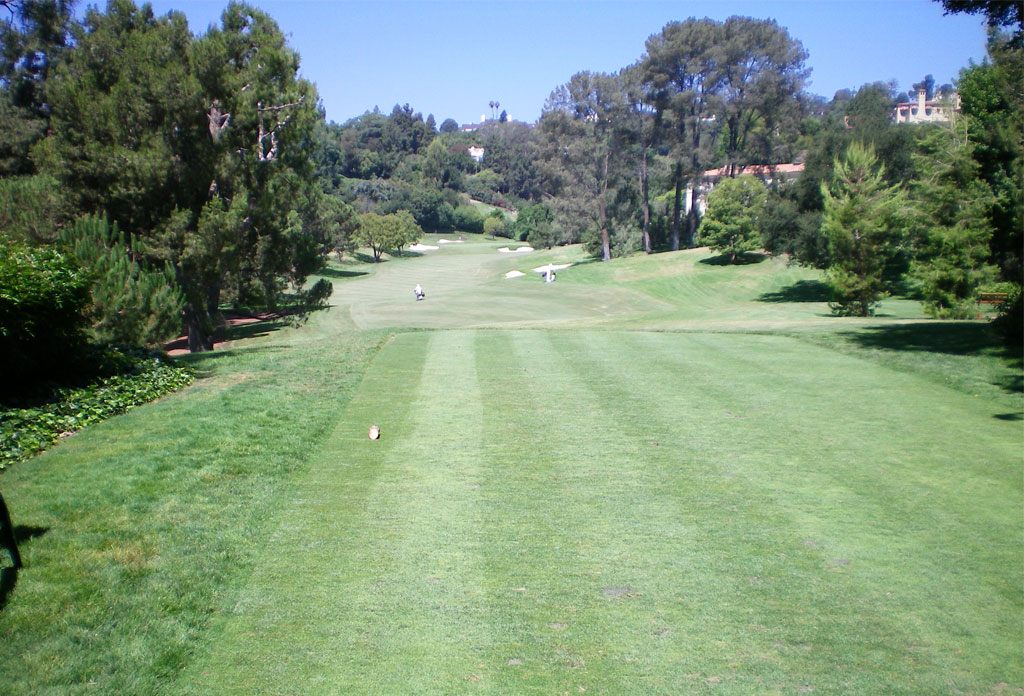
Approach:
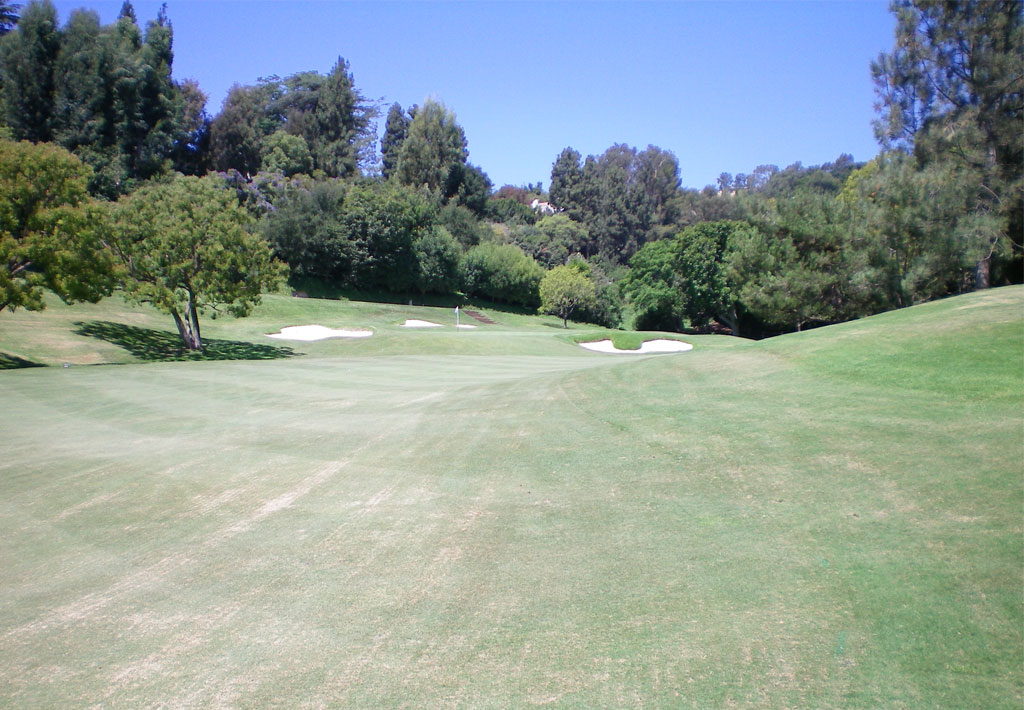 Hole 7
Hole 7Par 4 373-391
Downhill dogleg left with a semi-blind tee shot. The safe shot left used to be followed with a tougher approach but now it just requires a chip out from the 10-20 pines that have been added.
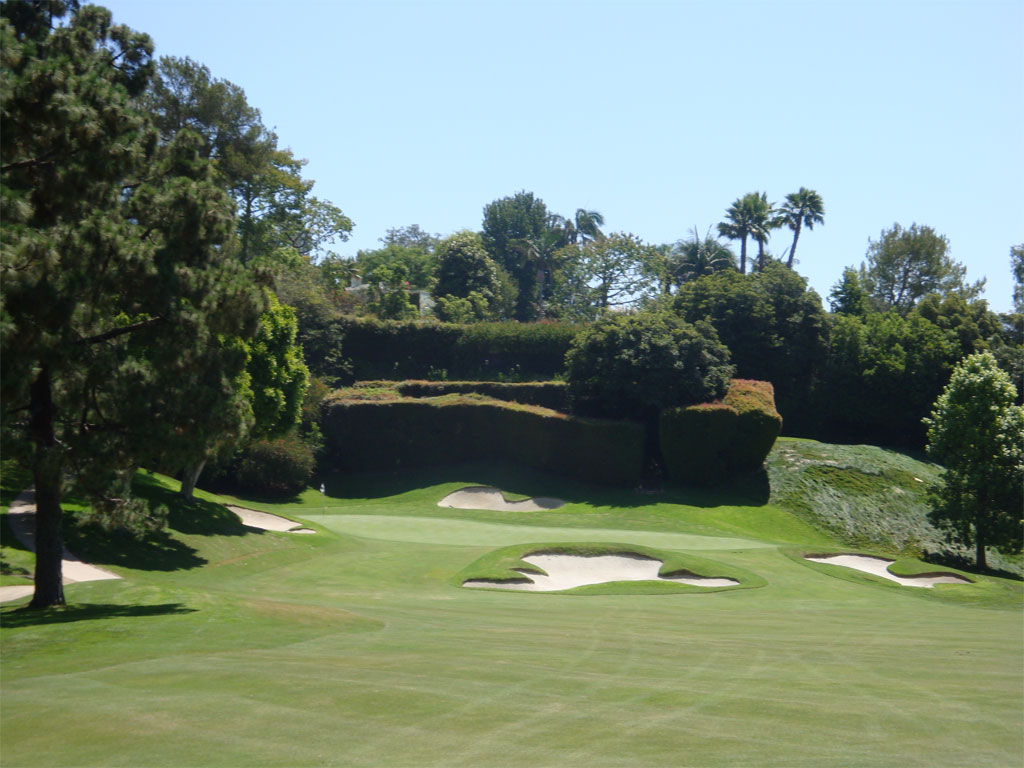
7 green was rebuilt in the 70s by George Fazio to include five distinct tiers. You can make out at least three of them in this picture looking back up the fairway.
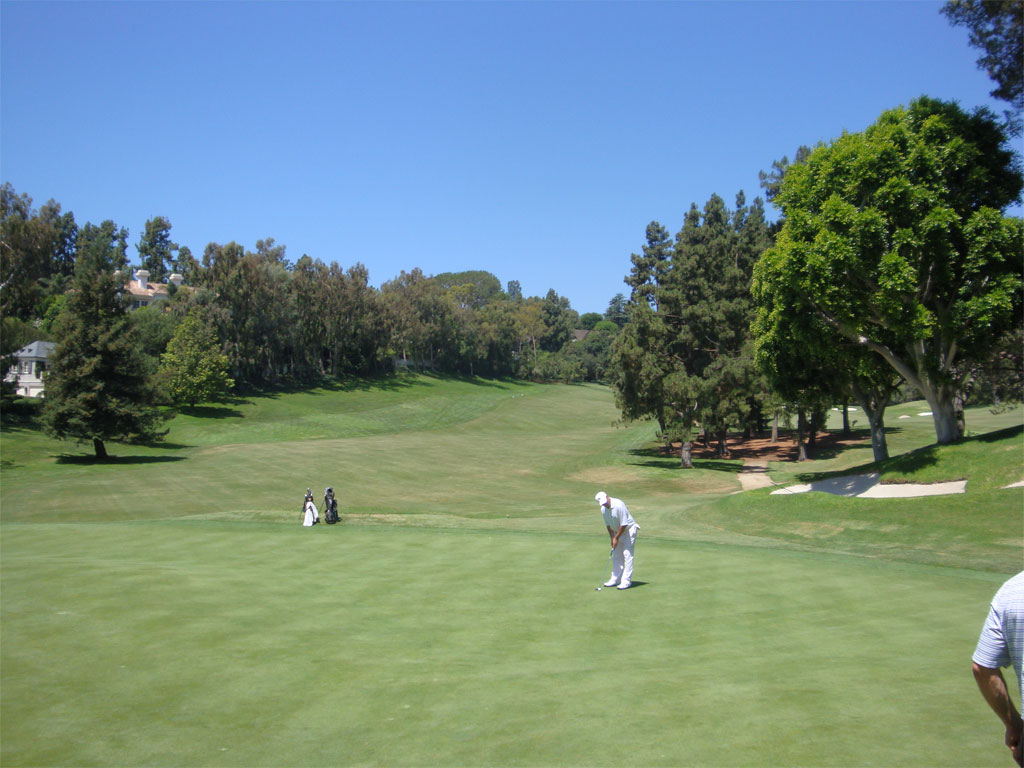 Hole 8
Hole 8Par 5 465-482
View from the tee to the wide fairway. If you carry the crest of the hill, you’ve got a 190-210 approach from a downhill lie. Howard Hughes once landed his plane on this fairway to impress Katherine Hepburn who lived on the 14th hole. Hughes was later banned from the club.
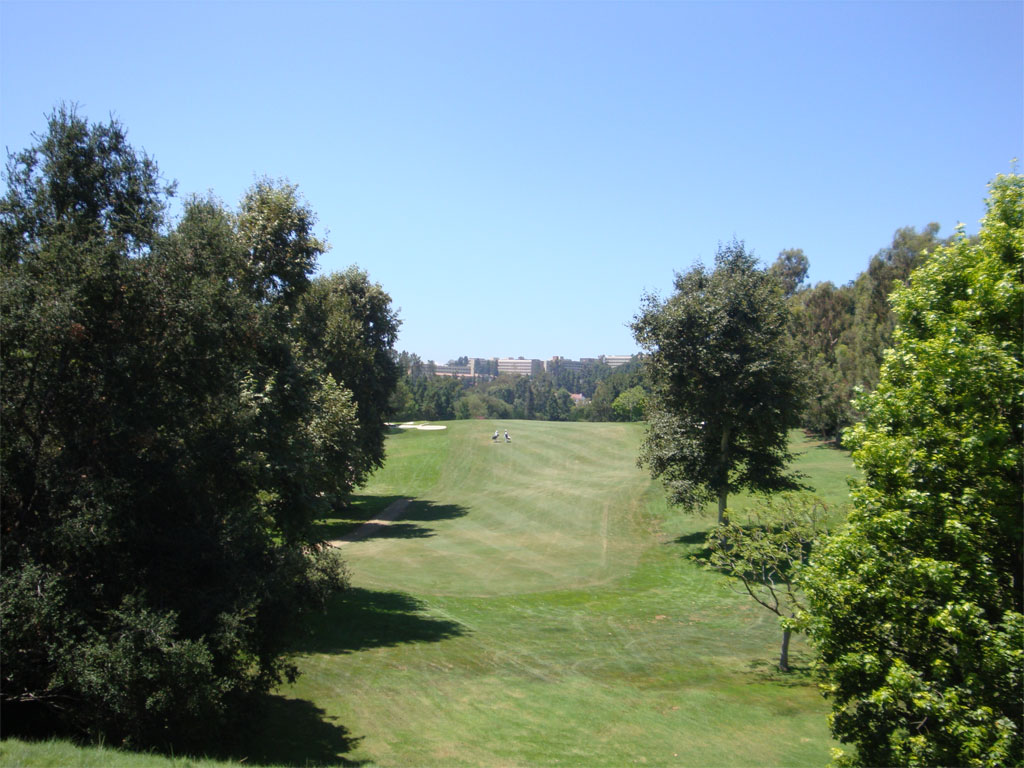
The ho-hum approach had been changed in the 60s by either Wilson or Jones to look similar to 15 ANGC- fronting rectangular lake, right greenside bunker. T Faz has now taken the water theme a step further. Personally, I think Shadow Creek does a better job at being Shadow Creek.
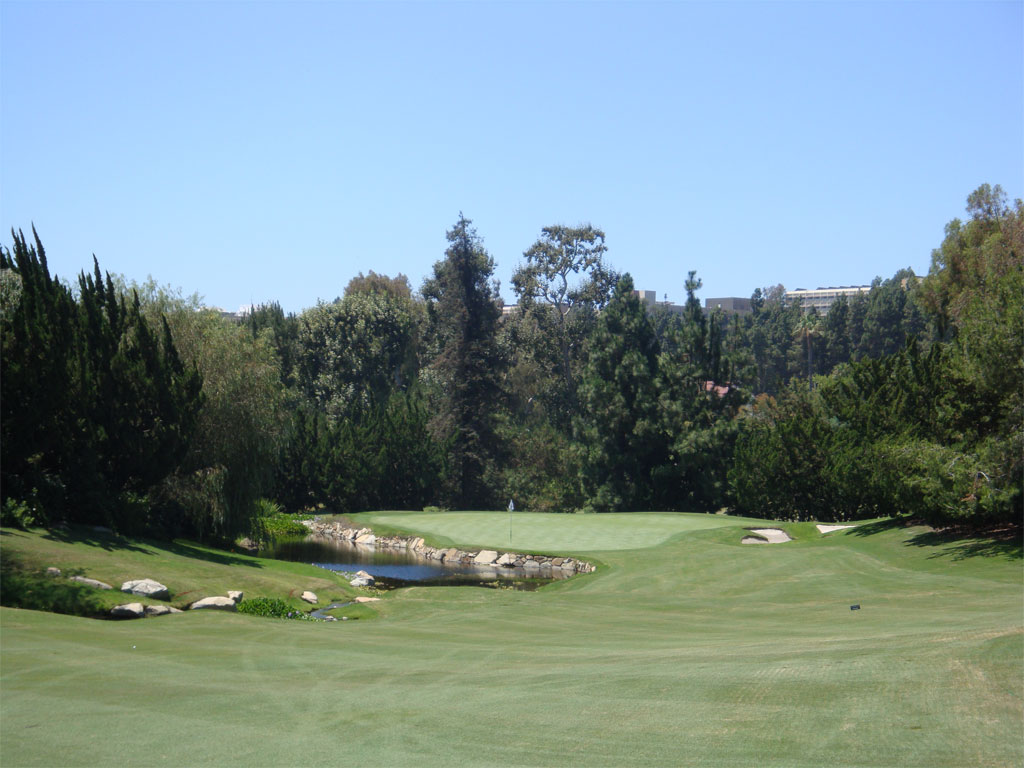 Hole 9
Hole 9Par 4 386-420
Another great lost hole. Originally this was a short hole with a fairway diagonally crossed by the creek that runs in front of #1. Likely the handy drainage work of Billy Bell, it would’ve been 40-50 yards from the green and would require a carry of 230-250 depending on the angle. Now it’s piped under the fairway. You can clearly see where the creek would’ve been in this photo:
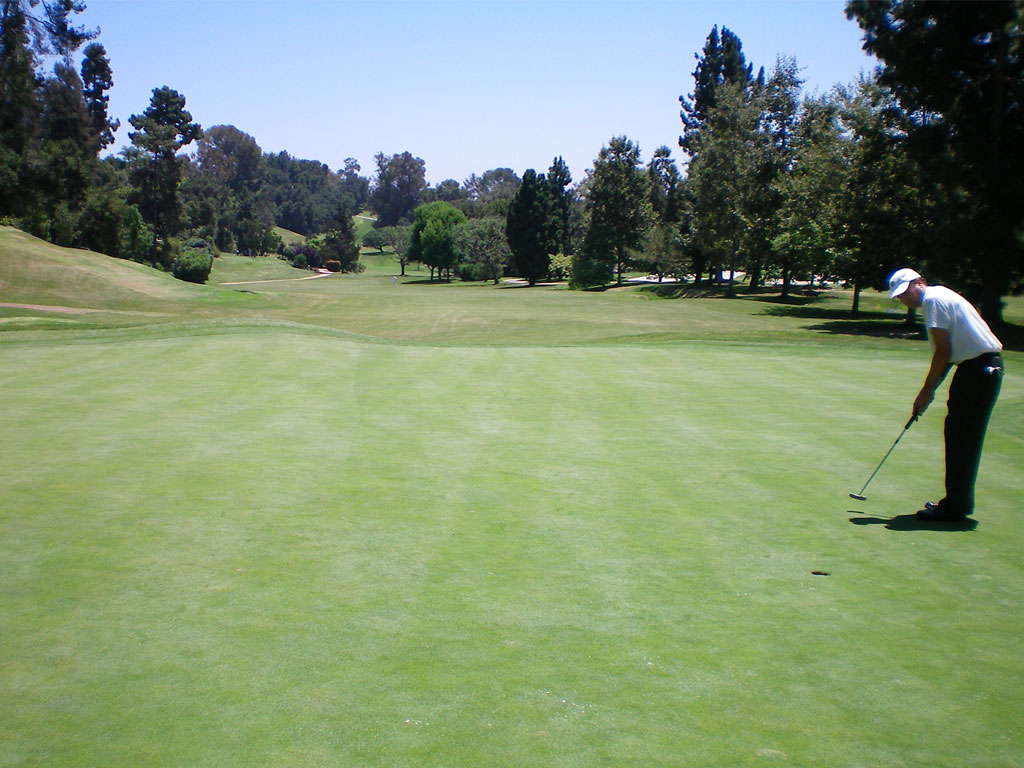 Hole 10
Hole 10Par 3 195-200
The chasm-like 10th provides one of the great tee shots in golf. Originally did not have bunkers on the right.
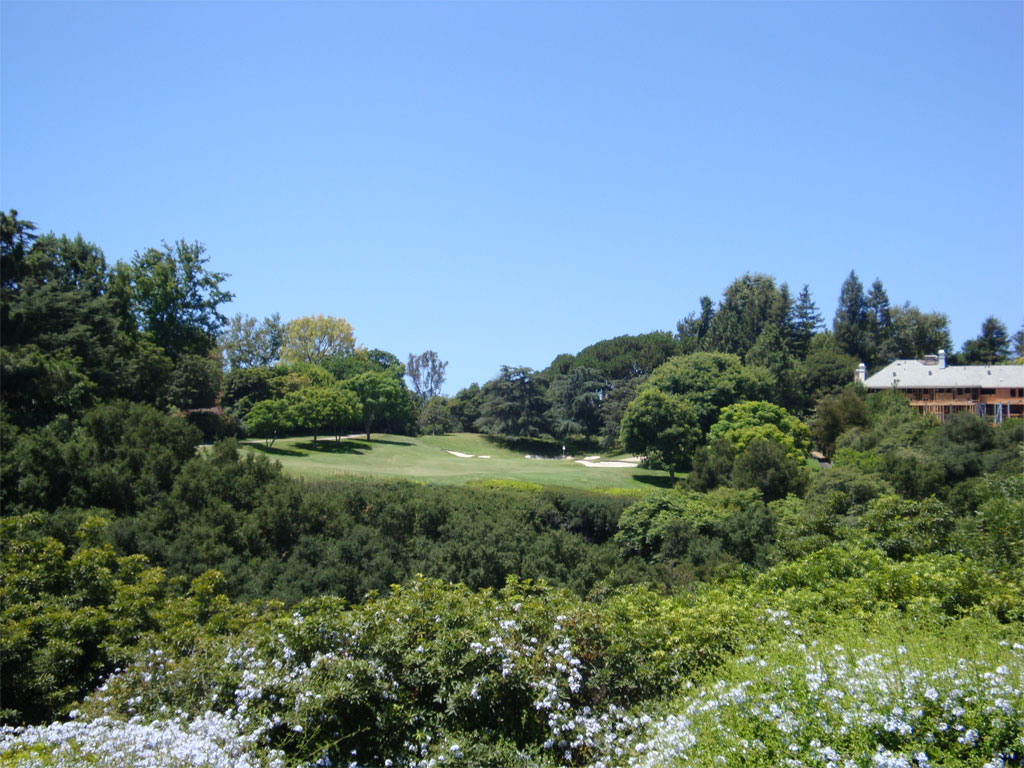
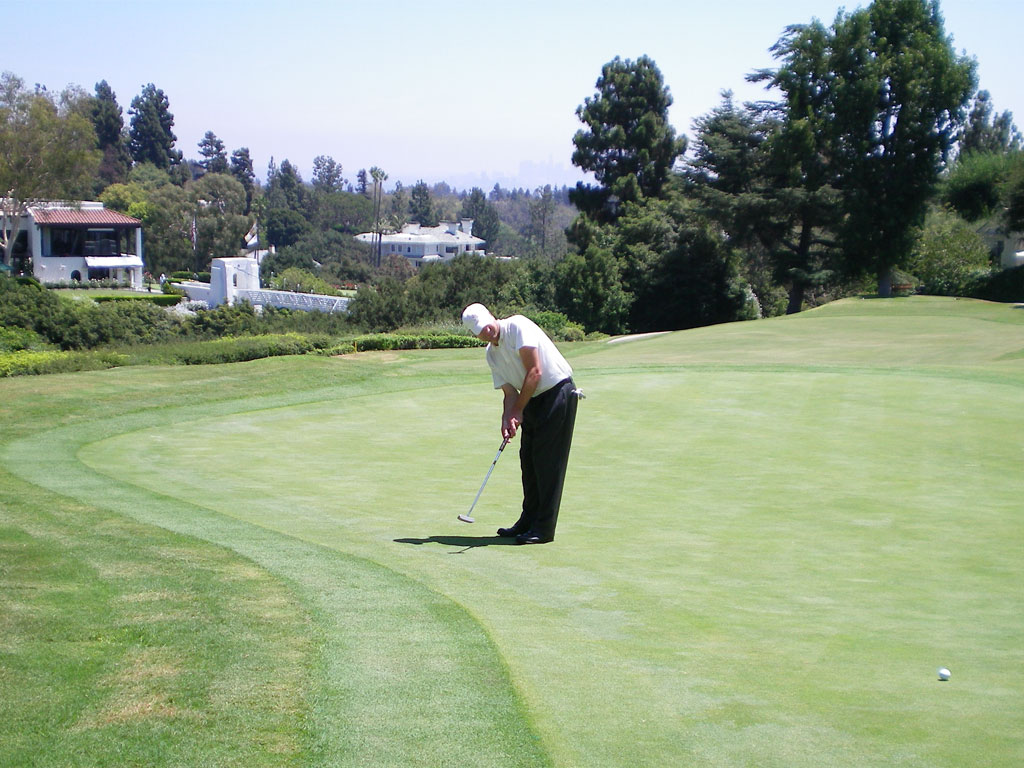 Hole 11
Hole 11Par 4 384-392
The Thomas alternate fairway was accessed via a blind drive over the knoll on the left. The alternate fairway is now a pond surrounded by trees. The club claims this was done to protect golfers on 15 and to avoid having balls hook into the mansion on the left. The green itself and the new bunkering are completely incongruous with the rest of the course.
Tee shot:
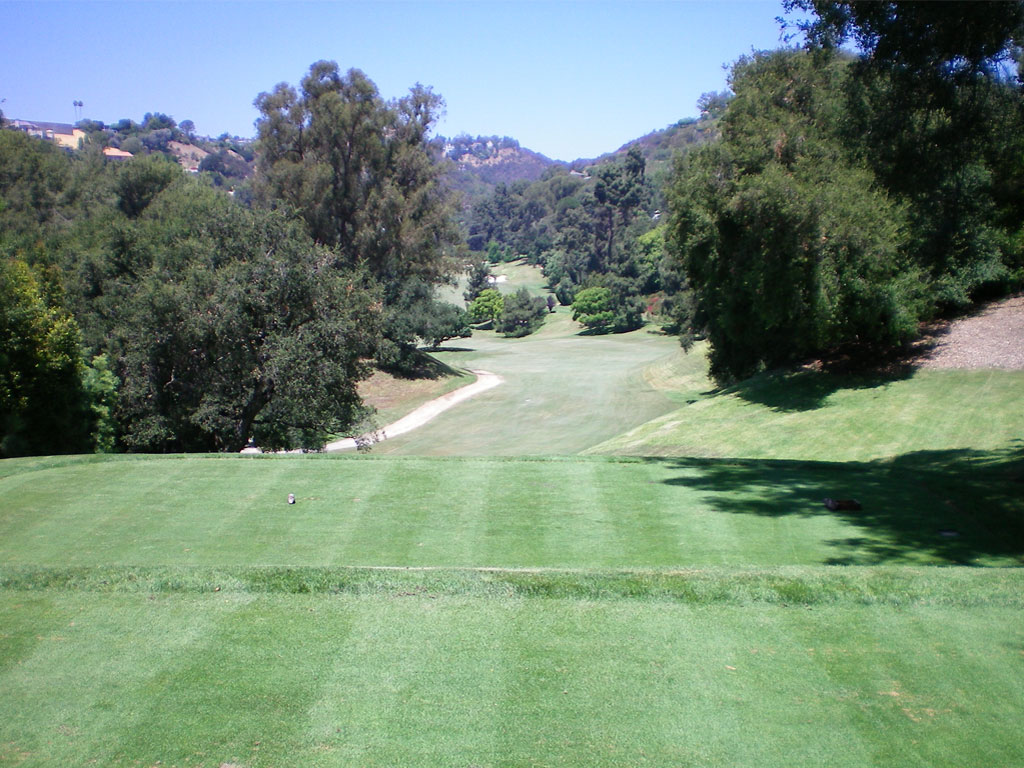
Alternate fairway/pond from the right fairway:
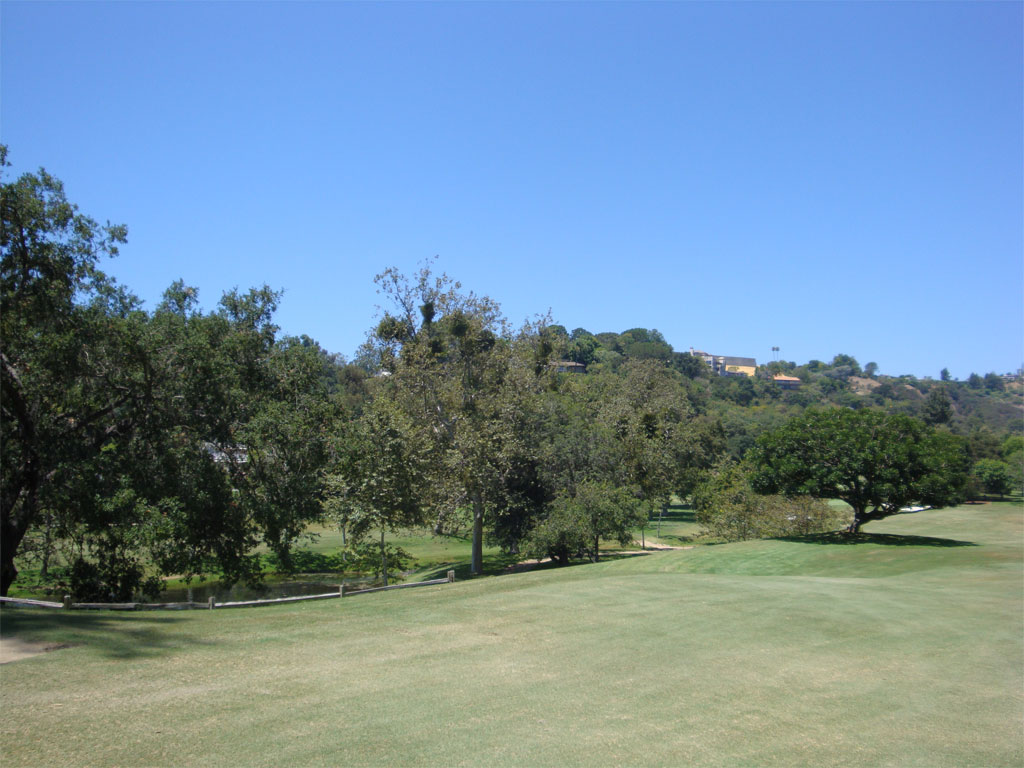
From green, looking back toward alternate fairway:
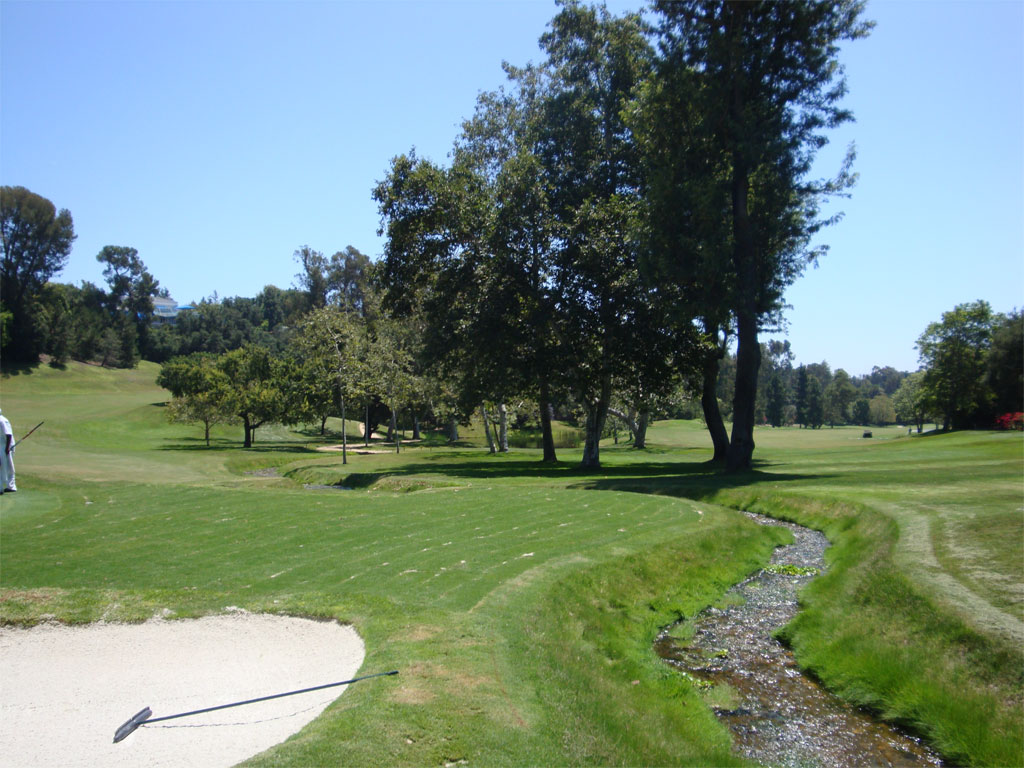 Hole 12
Hole 12Par 4 347-393
Formerly the famous “Mae West” hole
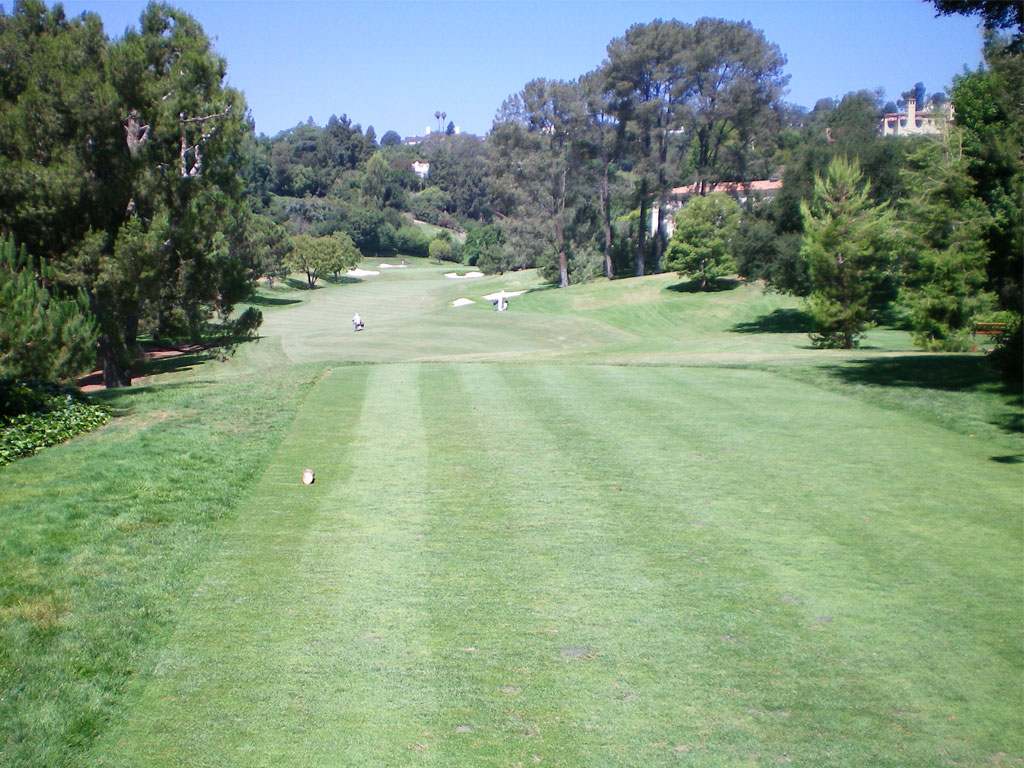
Approach - NOW YOU SEE MAE…..NOW YOU DON’T
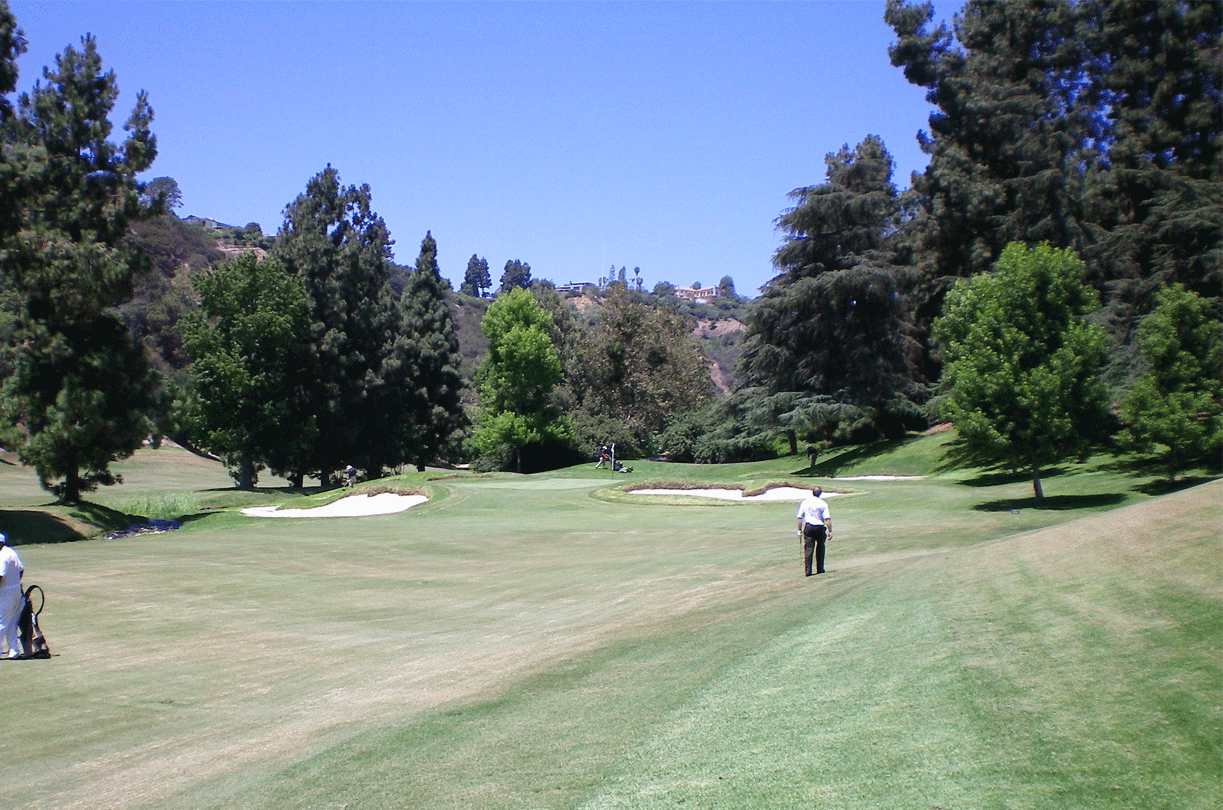 Hole 13
Hole 13Par 3 193-225
 Hole 14
Hole 14Par 5 562-584
The rebuilt bunker 40-50 yard short of the green is in relatively the same spot as the original
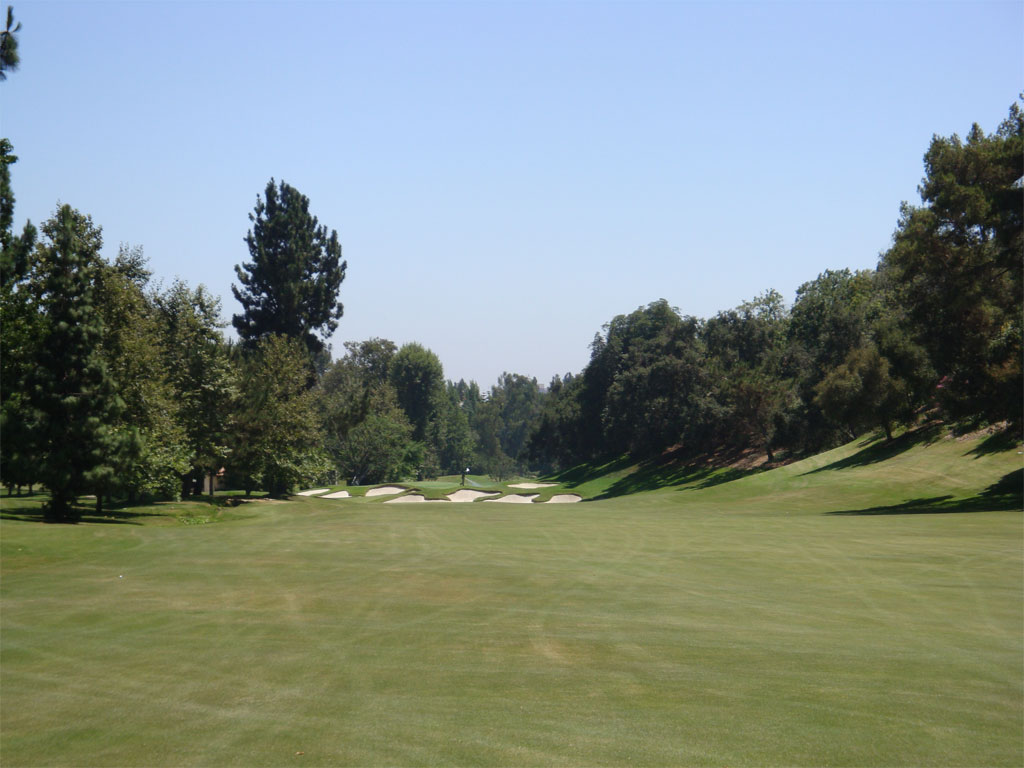
View of the bunker from the creek on the left:
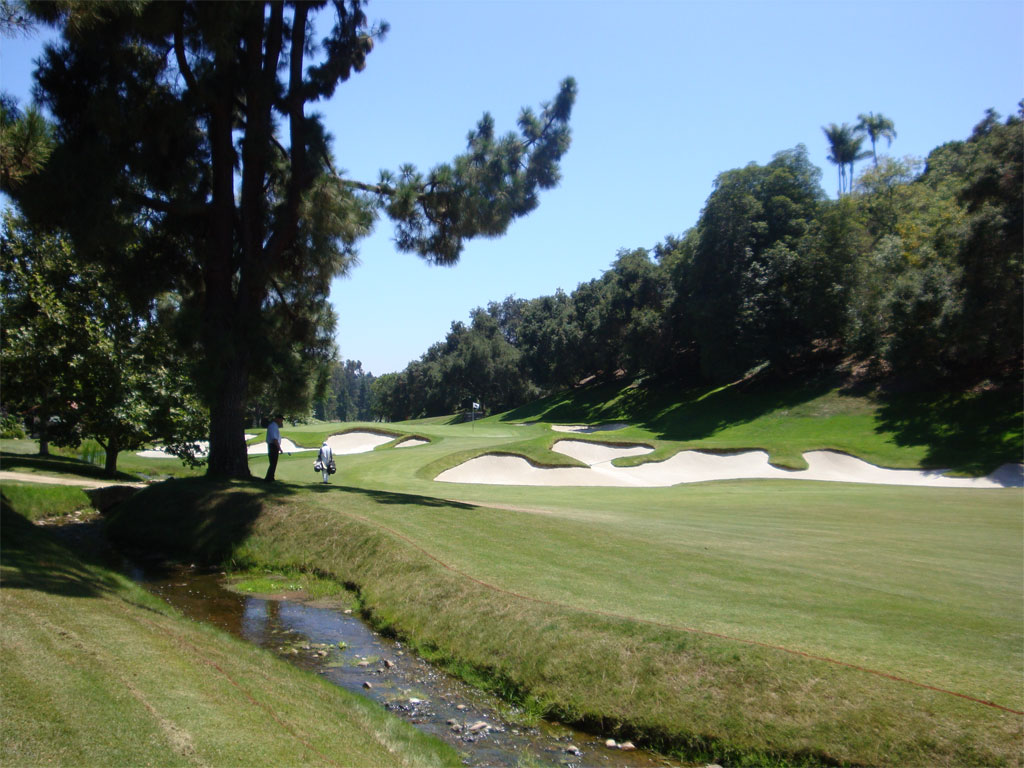 Hole 15
Hole 15Par 4 436-468
Looking back down the fairway from front-to-back green.
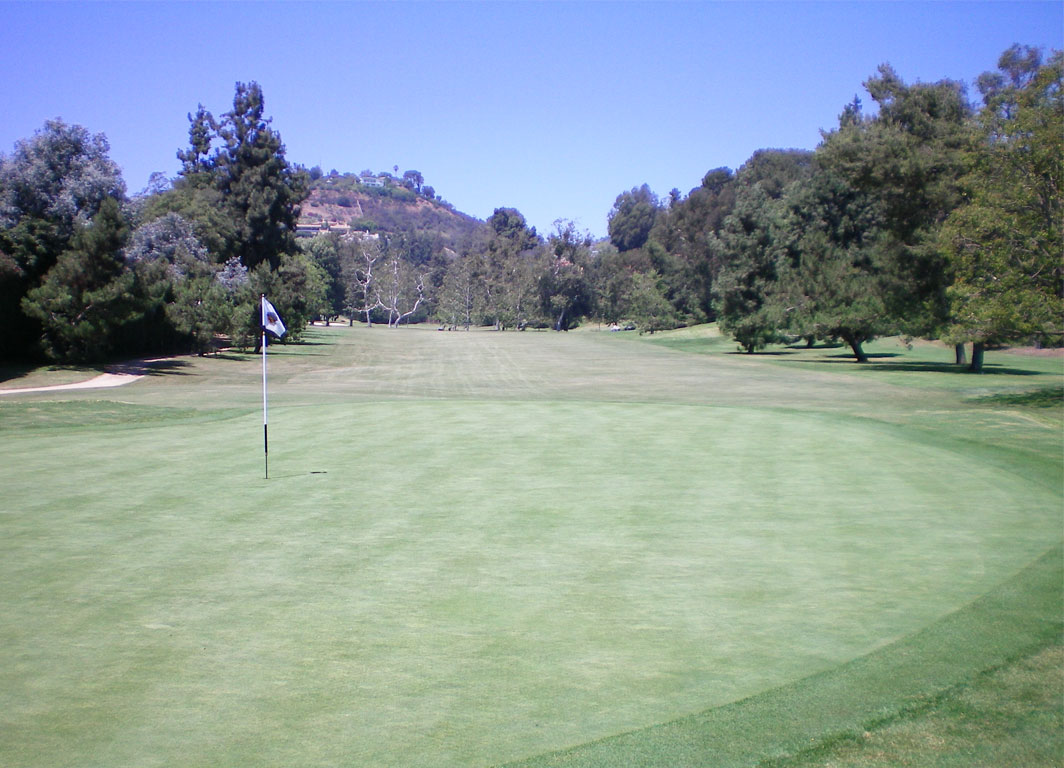 Hole 16
Hole 16Par 3 174-195
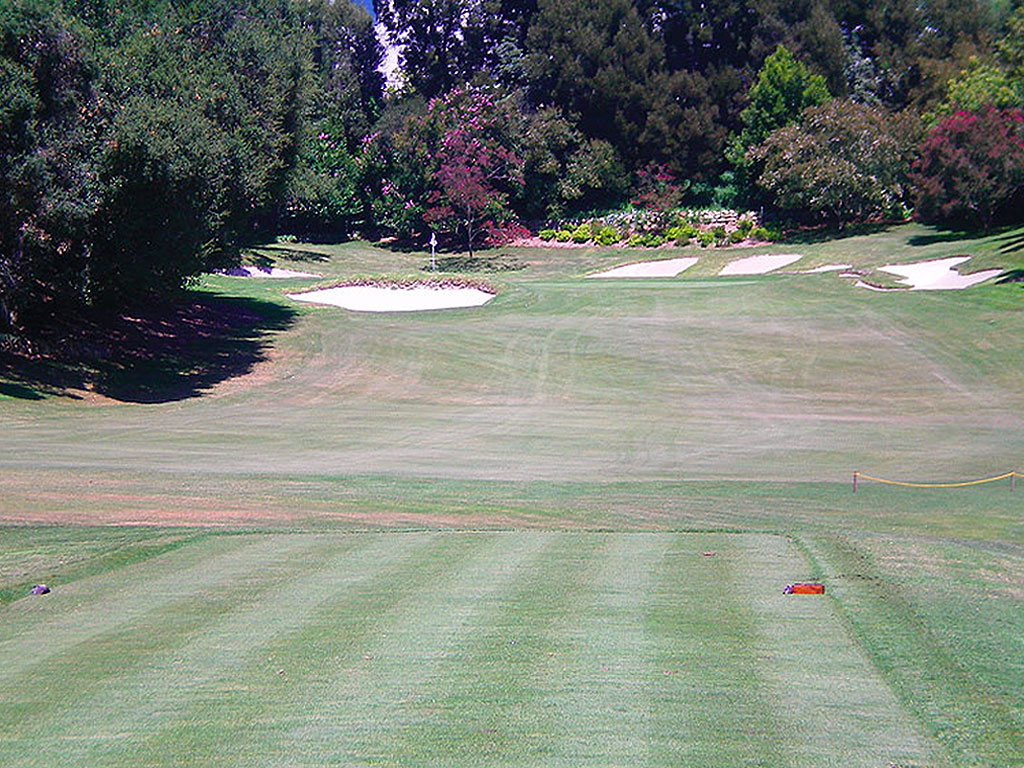 Hole 17
Hole 17Par 4 449-468
A great hole despite tree growth on the right to protect houses. Aggressive drive down the right will bounce toward the green. Long hitters need to either cut the corner or hit 3W. Ben Hogan called it one of the best par 4s he had played.
Tee shot:
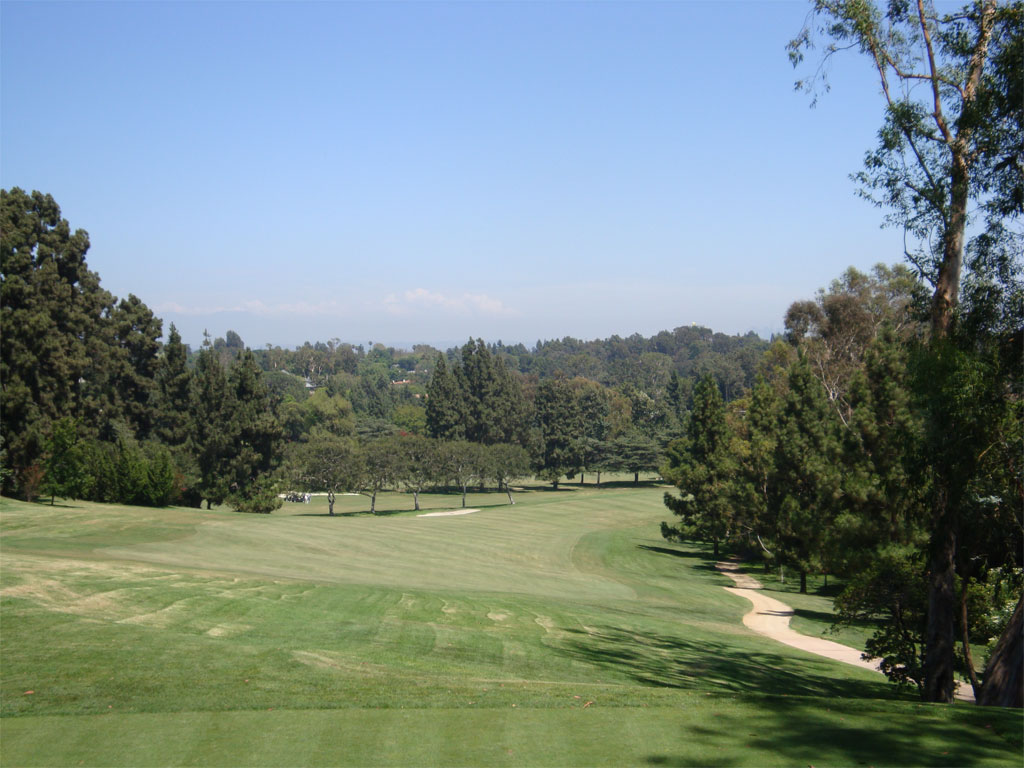
Approach:
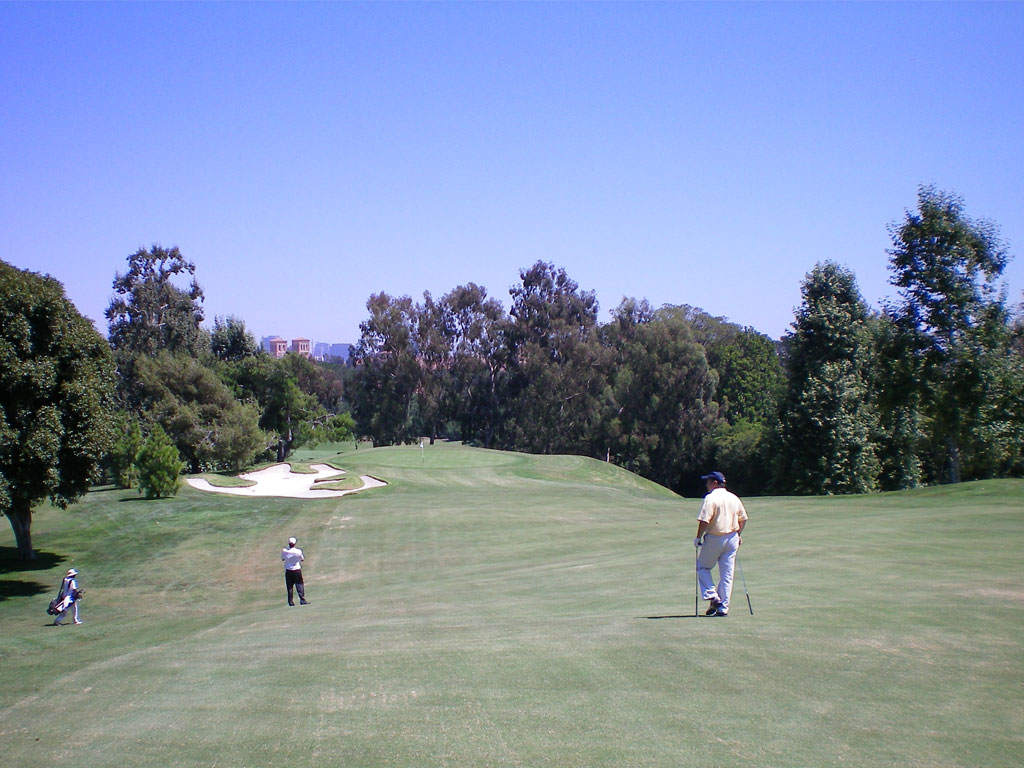
Right side fall-off:
 Hole 18
Hole 18384-416
Solid uphill finisher to a blind putting surface located under the swinging bridge- one of the great green sites in golf. Like #9, a new back tee was recently added by “The Little Pro” Eddie Merrins.
Approach showing what might be the closest thing to a Thomas/Bell bunker remaining on the course. The side bunkers were added by Wilson or RTJ.
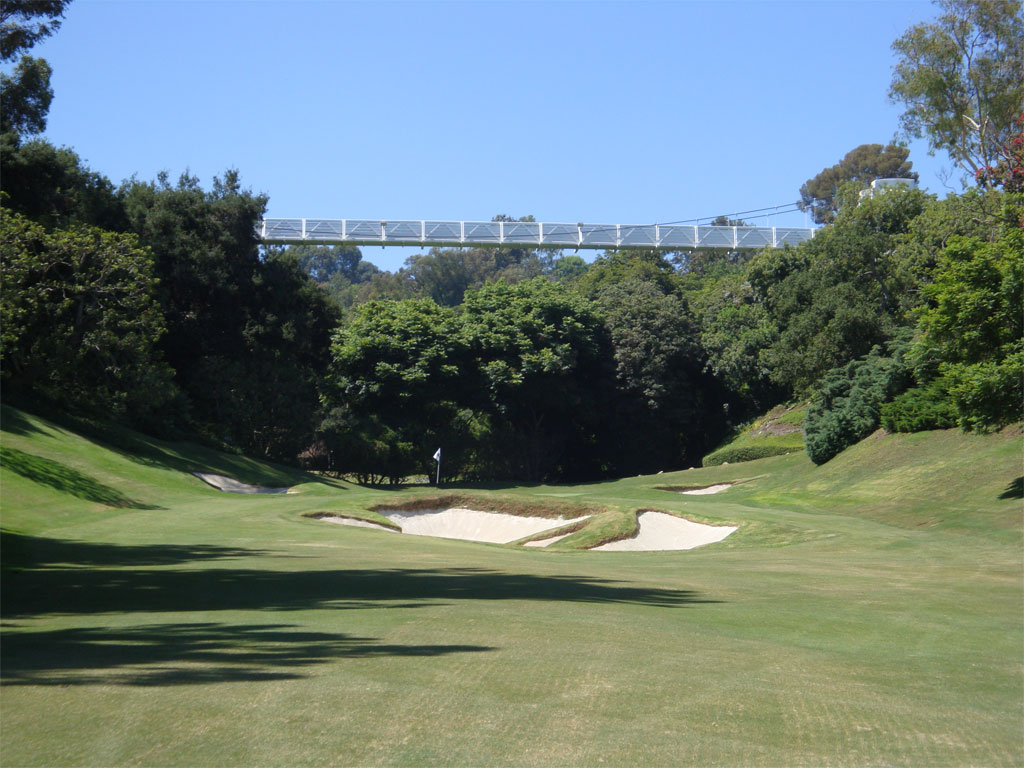
18 green from the swinging bridge:
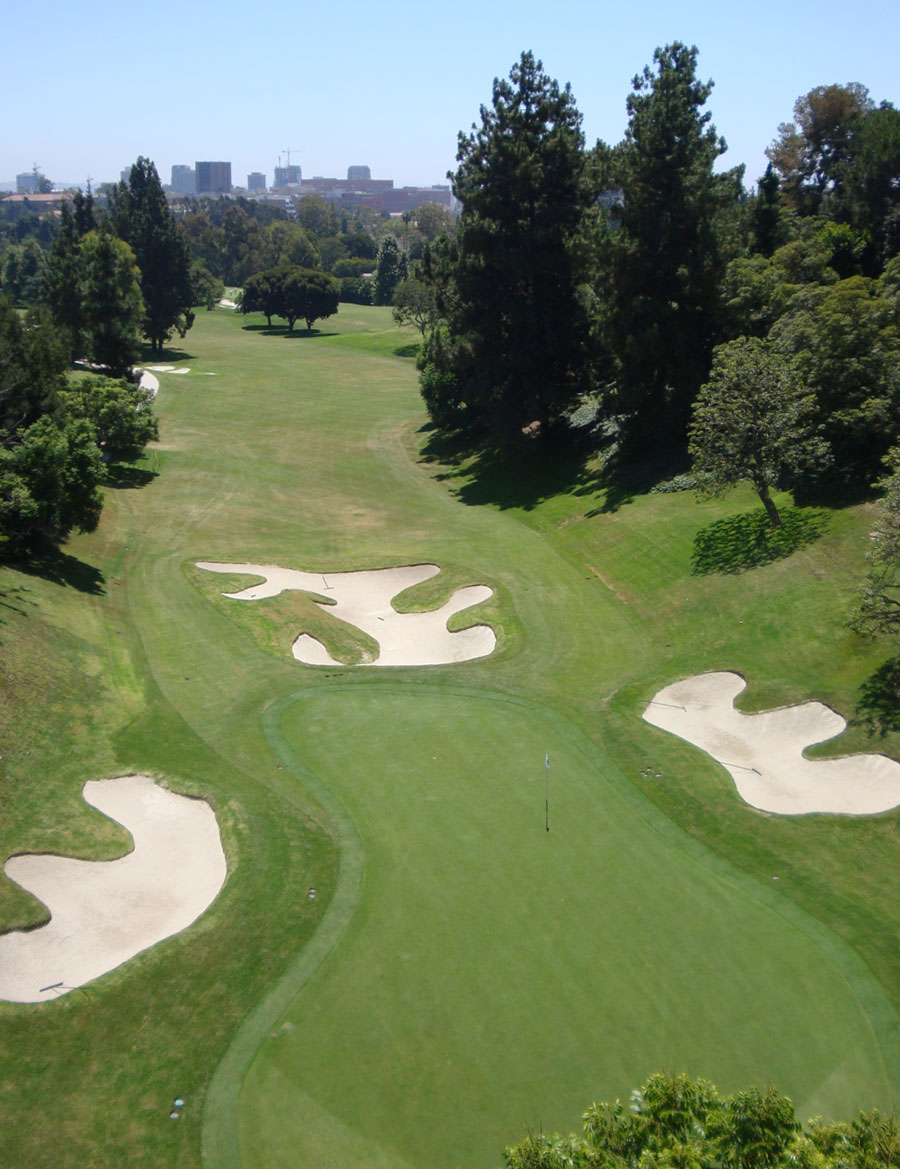
Bel-Air is still a special place in my opinion and much more challenging than when I last played it. Also, the club has a friendly atmosphere and a welcoming staff. But they sure aren’t interested in protecting their classic Thomas design. If you haven’t played Bel-Air I recommend you get out there in the next year or two. After that, any other Fazio will suffice.
-Robert